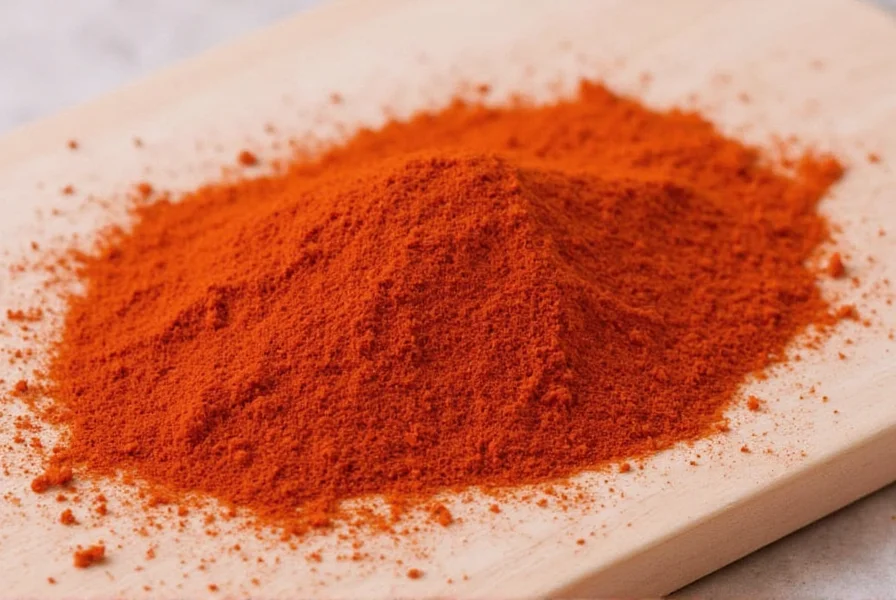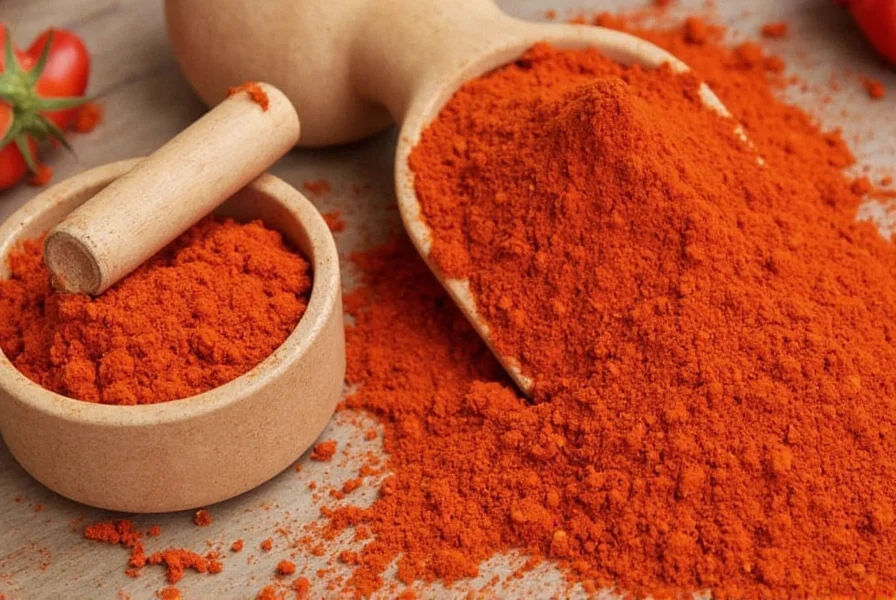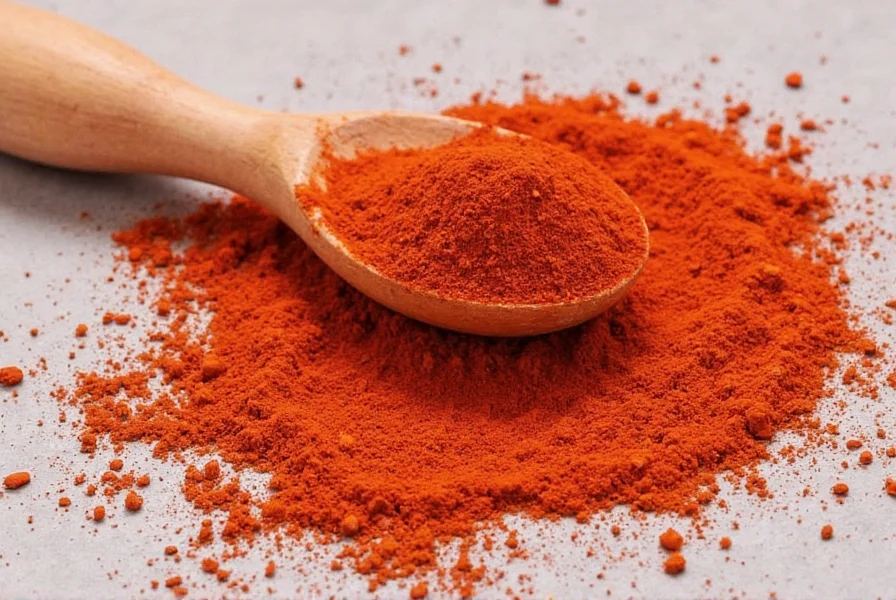When your recipe calls for paprika but your spice cabinet comes up empty, knowing the right replacement can save your dish from disappointment. Paprika isn't just a single flavor profile—it comes in sweet, smoked, and hot varieties, each serving distinct culinary purposes across Hungarian, Spanish, and other global cuisines. Understanding these differences is crucial when selecting a substitute that won't compromise your cooking results.
Understanding Paprika Varieties and Their Roles
Paprika's versatility stems from its multiple forms, each contributing unique characteristics to dishes:
- Sweet paprika - The most common variety, offering mild pepper flavor with subtle sweetness and vibrant red color
- Smoked paprika (pimentón) - Made from peppers dried over oak fires, providing deep smoky notes essential in Spanish chorizo and paella
- Hot paprika - Contains spicy Capsicum varieties, bringing both color and heat to dishes like Hungarian goulash
When substituting, consider both the flavor profile and color contribution paprika provides to your specific recipe. A successful replacement maintains the dish's intended balance while working with ingredients you have available.
Best Substitutes by Paprika Type
Replacing Sweet Paprika
Sweet paprika's primary contributions are color and mild pepper flavor without significant heat. When substituting:
- Chili powder blend - Use 3:1 ratio (3 parts chili powder to 1 part paprika replacement). Most chili powders contain cumin and garlic that alter flavor slightly
- Pimento powder - Made from the same peppers as paprika but less common; provides similar mild flavor
- Tomato paste + pinch of cayenne - For color and subtle pepper notes in stews and braises
Replacing Smoked Paprika
Smoked paprika's distinctive campfire aroma is hardest to replicate. Effective alternatives include:
- Chipotle powder diluted with sweet paprika substitute - Use 1/4 teaspoon chipotle powder mixed with 3/4 teaspoon sweet paprika replacement
- Smoked salt + regular paprika substitute - Adds smokiness without overwhelming heat
- Liquid smoke (sparingly) - 1-2 drops per teaspoon of paprika called for, but use cautiously as it can dominate
Replacing Hot Paprika
When heat is the primary requirement:
- Cayenne pepper - Use half the amount (hot paprika is milder than pure cayenne)
- Crushed red pepper flakes - Soak briefly in warm water to extract color before using
- Hot chili powder - Check ingredients as some contain additional spices that alter flavor
| Paprika Type | Best Substitute | Ratio | Best For |
|---|---|---|---|
| Sweet | Chili powder + cumin | 1/2 tsp chili powder + 1/4 tsp cumin | Deviled eggs, potato salad, light stews |
| Smoked | Chipotle powder + sweet base | 1/4 tsp chipotle + 3/4 tsp sweet substitute | Paella, chorizo, barbecue rubs |
| Hot | Cayenne pepper | 1/2 amount of cayenne | Goulash, spicy bean dishes, marinades |
Recipe-Specific Substitution Guidance
Certain dishes have particular requirements when replacing paprika:
For Chili and Stews
When substituting paprika in chili recipes, maintain the dish's color profile while balancing heat. For Texas-style chili that calls for smoked paprika, combine 1 teaspoon ancho chili powder with 1/8 teaspoon smoked salt. This preserves both the deep red color and subtle smokiness without overwhelming the meat flavors.
For Spanish and Mediterranean Dishes
Paella and other Spanish rice dishes rely heavily on smoked paprika's distinctive flavor. Without it, use a combination of sweet paprika substitute plus a single drop of liquid smoke. Alternatively, finely grated Spanish smoked cheese (like pimentón-laced cheese) can provide similar aromatic qualities when stirred in during the final minutes of cooking.
For Rubs and Marinades
Dry rubs offer more flexibility with paprika substitutions. When replacing smoked paprika in barbecue rubs, add 1/2 teaspoon of blackstrap molasses to your substitute mixture to mimic the caramelized notes that smoked paprika provides during cooking.

Common Substitution Mistakes to Avoid
Many home cooks make these critical errors when replacing paprika:
- Using plain cayenne for smoked paprika - This adds heat without the essential smokiness, creating an unbalanced flavor profile
- Substituting equal amounts of chili powder for hot paprika - Most chili powders contain additional spices that alter the dish's intended flavor
- Ignoring color implications - Paprika provides vibrant red hue that affects visual appeal; tomato paste can help maintain color
- Adding liquid smoke directly to dry rubs - This concentrated flavor requires dilution to prevent overpowering the dish
Remember that paprika substitutions work best when you understand what aspect of paprika your recipe actually requires—color, mild pepper flavor, smokiness, or heat. Many successful substitutions involve combining two or three ingredients to replicate paprika's multifaceted contribution to a dish.

Building Your Own Paprika Replacement Blend
For frequent cooking needs, create a versatile paprika substitute blend:
- 3 parts sweet paprika alternative (chili powder/cumin mix)
- 1 part smoked element (smoked salt or diluted chipotle)
- Small pinch of cayenne (optional, for heat)
Store this mixture in an airtight container for up to three months. Adjust the ratios based on your most common cooking needs—more smoked element for barbecue enthusiasts, less heat for family-friendly meals.
Final Considerations for Successful Substitutions
The key to effective paprika replacement lies in understanding your specific recipe's requirements. Dishes where paprika serves as the primary flavor (like Hungarian chicken paprikash) demand more careful substitution than recipes where it plays a supporting role. When in doubt, start with a smaller amount of your substitute and adjust during cooking. Most importantly, don't let the absence of paprika prevent you from preparing a dish you enjoy—thoughtful substitutions often lead to delicious new variations of your favorite recipes.











 浙公网安备
33010002000092号
浙公网安备
33010002000092号 浙B2-20120091-4
浙B2-20120091-4